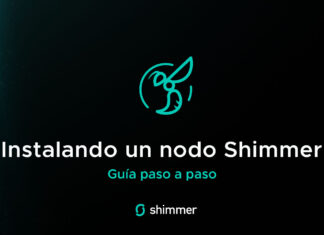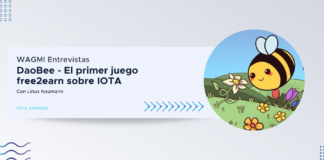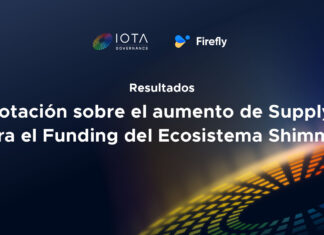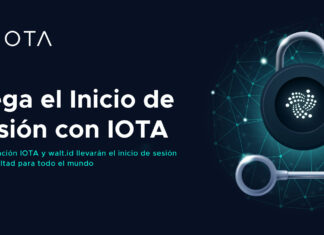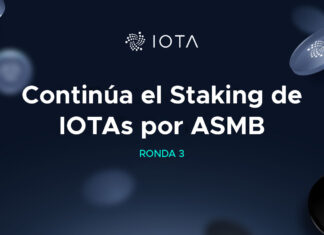
IH: Tell us a bit about your tech background as short presentation.
PW: I started learning to code when I was 13 years old. Three years later I started working on larger projects for small businesses and family. I think that after that, a hobby that went out of hand became my full-time business. After that I did and learned whatever I liked, whether it
be web or game development, machine learning to cryptography and decentralized architectures (like IOTA). It was never about money, I think that if it was, it wouldn’t stick with me and I wouldn’t be able to remember such a broad skillset.
What do you think of the developers community around IOTA and where did you find other developers to collaborate with the “Ledger project”?
I see IOTA’s community right now as Bitcoin’s community was in 2011. It could be nostalgia, but when I joined Bitcoin in 2011 it really felt like an emerging technology, where everyone had read the white-paper and everyone knew what it was about. About a year ago I joined IOTA’s Slack (now on Discord) with the same feeling. I hope and I think that together we’ll keep that vibe!
As for the people that started working on Ledger, they joined shortly after a picture showing the Ledger Nano S with a working Kerl-implementation was posted on Reddit. I think the whole post really turned into a call to action from within the community.
How far from a ready to use Beta you think the Ledger project is?
I think that most people want to use the Ledger with the mainnet rather than testnet that was just released. If you trust us (without Ledger security audit, no integration with Trinity) you can already use it. I wouldn’t recommend it, but you can.
To make this easier, the team and I have discussed to create a basic wallet anyway. The reason we came back to this decision is because Roman Semko recently released Carriota Romeo – a lightweight web wallet.
So for us it’ll be relatively easy to move that to Ledger.
This release should be available in about 3 weeks.
I think that after this wallet has been released it will be easy for the masses to use it (still, on your own risk).
From your experience with Ledger integration, how hard you think it would be to do the same with IOTA in Trezor?
It should be easier on Trezor, since the hardest part about getting IOTA on the Ledger Nano S was because the memory available was around 4kb (this is about 400 times smaller than the space on a floppy disk). In fact, Bart Slinger already made it possible to
sign transactions.
I don’t know his developments now, but I was in contact with him to make sure that we could get some questions answered (IOTA-Ledger’s source code was largely based on Trezor before it evolved) and to make sure that both our code-bases were compatible (I.e
make both projects generate the same seeds given the same input)
What’s next on your head? Do you have any new IOTA related projects in mind apart from Ledger integration?
I do! I have done a project for the municipality of Haarlem, Netherlands, which was a proof-of-concept to use IOTA to secure legal documents in combination with identity management. They have plans to move to production, but the project is currently on hold for budgeting reasons. There are other projects, but they are under NDA so I cannot discuss them.
What would you say to developers trying to build stuff around IOTA and having issues with lack of documentation/code samples?
Ask. And know that you’re not the only one who struggles with lack of docs, considering IOTA is still in beta and their API’s change a lot.
If not the core team, there is a huge community that is closely related to the more industrial part of cryptocurrencies and DLT, everyone wants everyone else to be successful. If I get a question and I don’t have the time to answer it, I usually forward them to the IOTA Discord,
and they always came back with a “thank you” and “the problem is solved”.
You did the first hardware wallet integration. How far you think we are from having IOTA wallets in machines such as cars?
The funny thing is that our IOTA-Ledger codebase has been forked in order to create a C-version (embedded hardware) wallet and a light node. This version also started from within the community. I’ve seen it running on the ESP8266, which is a very popular IoT board.
So in terms of how far we are, it’s basically like the Ledger itself, it’s possible, but it’s in a testing phase and not recommended for daily use.
Finally, any words to IOTA supporters and developers from Latinamerica?
For developers, I’d say go bananas! (Or in your case, go jalapeños!). Working on solutions that use IOTA really doesn’t stop at making feeless transactions.
It can be used for so much more, possibly solutions we haven’t came up with yet. Biggest hint is: aside from IOTA being a currency and a DLT to store and distribute data, it could also be a protocol that, in the near-future, everyone who creates the next-gen IoT solutions agrees on using. Imagine the social-economic applications this could have.
Even if it’s you’ve got something you’re not comfortable working on yet, the community is there to help you with that. Learning goes fast there!


